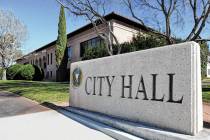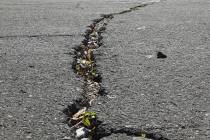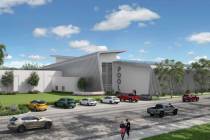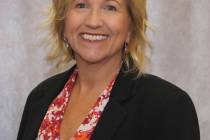City to put spending initiative on ballot
Boulder City residents will determine if the city can spend as much as $1 million annually from the capital improvement fund to maintain and improve city facilities and infrastructure.
The City Council debated the ballot initiative during its Tuesday night meeting while discussing several capital improvement needs. Residents can vote on the ballot question in the upcoming general election.
The original proposal would have put a five-year limit on spending, but not every council member was on board with a yearly cap.
Councilman Rod Woodbury said the purpose of the capital improvement fund is to cover things such as infrastructure improvements. He emphasized that the ballot question stated the city could only spend money as it becomes available, so it would not be spending money it didn’t have.
“I really don’t see the advantage of hamstringing ourselves to a certain period of five years,” Woodbury said. “I just think this capital improvement fund, by virtue of its name … that’s what it’s for. I would rather see something that’s open-ended.”
Twenty percent of solar lease revenue and 100 percent of land sales make up the capital improvement fund, which pays for Boulder City’s portion of the third intake pipe at Lake Mead. In the November election, voters approved two ballot questions that also would help improve the city’s electrical infrastructure.
One question gave the city the authority to spend as much as $500,000 per year from the capital improvement fund to repair the city’s outdated electrical infrastructure. The money will be spent for the next seven years, as per the ballot question.
Councilman Duncan McCoy said he didn’t see a problem with putting a yearly limit on spending covered in the proposed ballot initiative.
“I don’t see putting a time restriction as hamstringing exactly. I see it more to provide a mechanism for reconsideration over a period of time,” he said. “Over time, needs change, situations change, what we need to spend our money on changes, the amount of money we have available changes, and it’s not a bad thing to reconsider from time to time.”
McCoy said he saw both sides of the argument and agreed that he would be fine with an open-ended arrangement.
City Attorney Dave Olsen, who helped draft the question, said that $1 million would be the most the city could spend on capital improvements during the course of the year. Funds that are not spent cannot be carried over into the next year.
Mayor Roger Tobler emphasized the importance of improving the city’s infrastructure and wanted to make sure that was included in the ballot question.
“That’s going to be one of our challenges down the road,” he said.
Improvements and repairs for city facilities will cost more than $34 million, including the possibility of a new $18 million aquatic center, according to staff reports.
“I just think there’s enough capital needs that could last us a lot longer than even 10 years at this point based on our current budget,” Woodbury said.
The general election is June 2.
The council also reviewed its midyear financial plan during Tuesday’s meeting. According to Finance Director Shirley Hughes, revenue in the general fund is on target. Property, room and consolidated taxes are all ahead of last year’s numbers, but golf course revenue is running behind.
The general fund’s budget projects expenses at a little more than $39 million, and spending to date was at 37 percent. The city also will receive about $10 million in deferred revenue from renegotiated solar leases with Techren Solar and KOMIPO.
About $8.2 million of that will go into the general fund, and about $2 million will go into the capital improvement fund.
Contact reporter Steven Slivka at sslivka@bouldercityreview.com or at 702-586-9401. Follow @StevenSlivka on Twitter.











